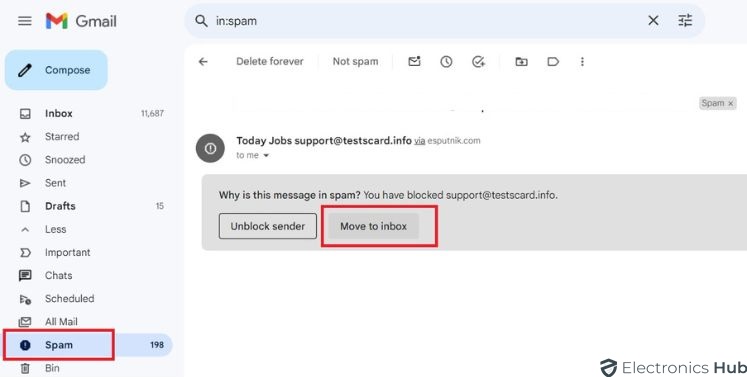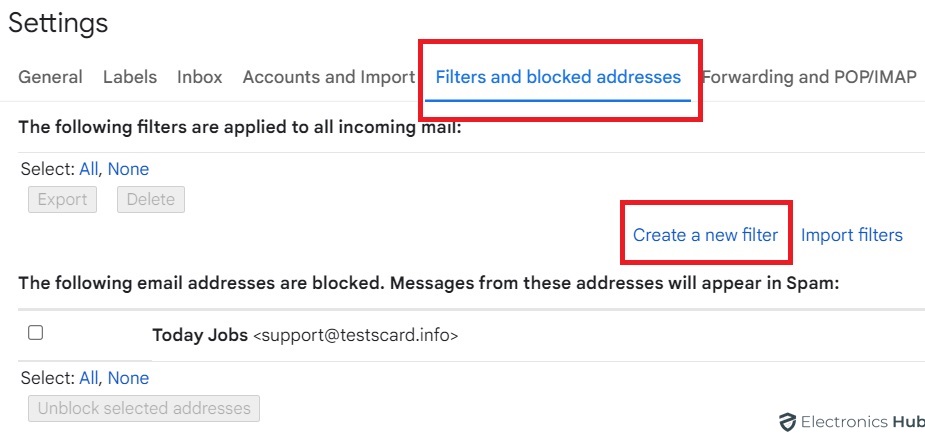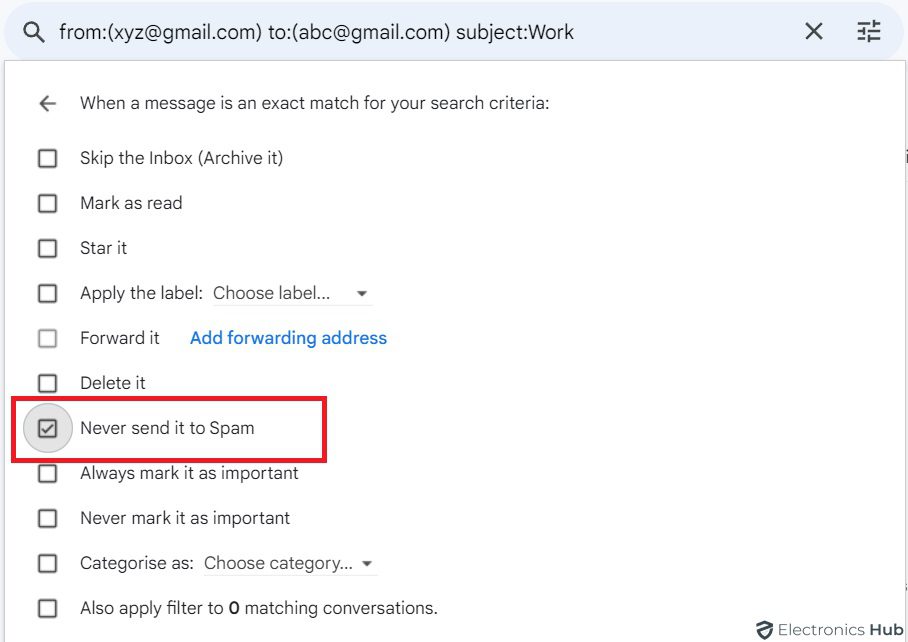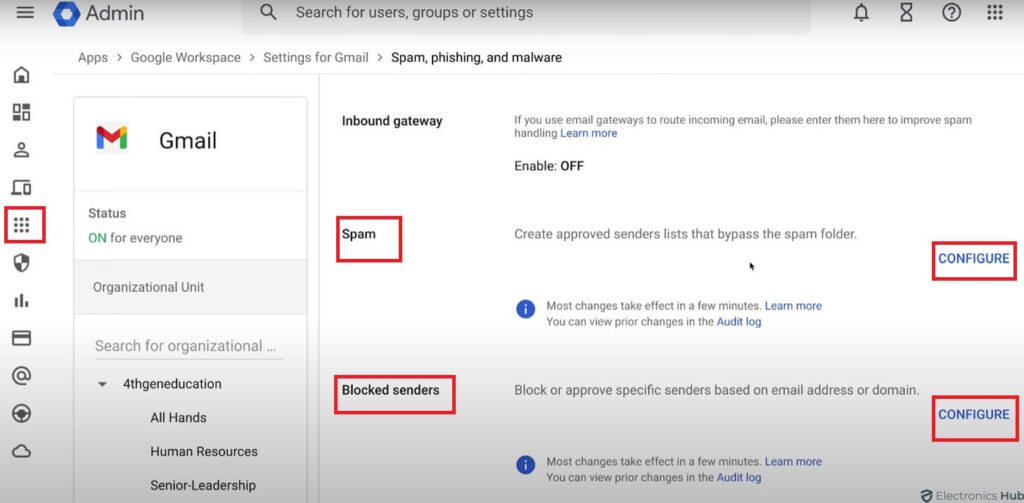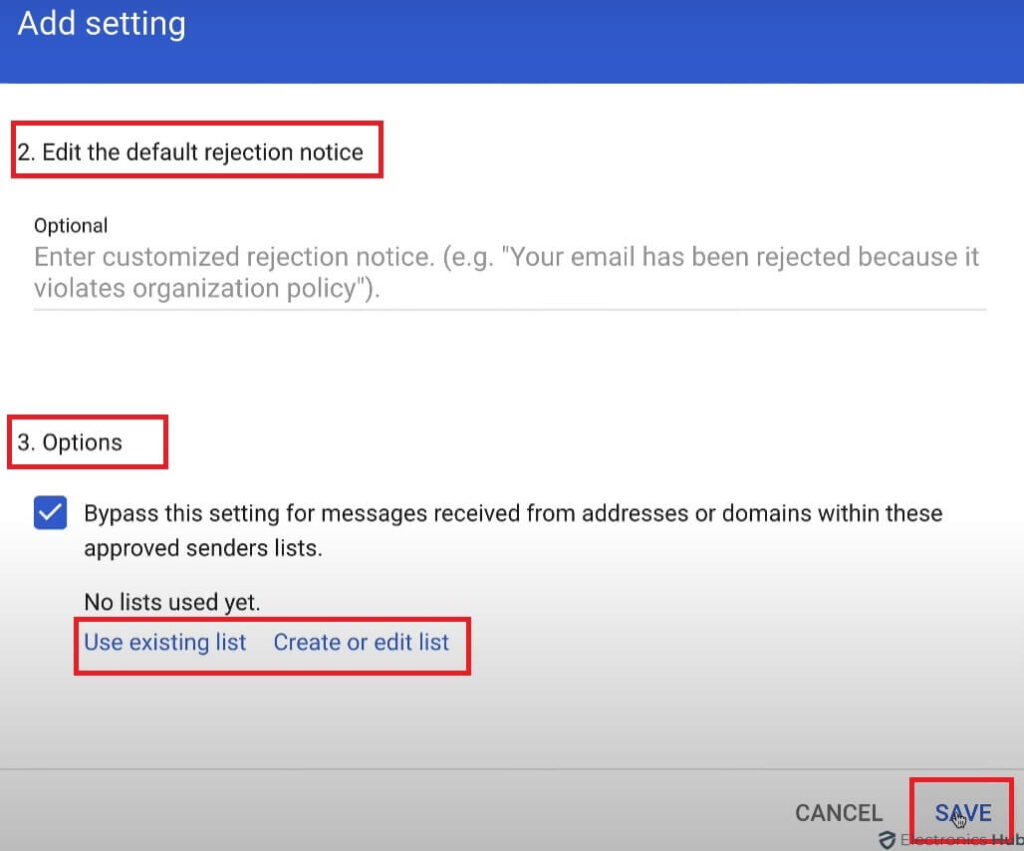Did you ever feel like your inbox is overflowing with unwanted junk mail? We understand your pain. Thankfully, Gmail has a built-in spam filter that acts like a bouncer for your inbox, tossing out suspicious emails before they reach your precious attention.
But what if an important email gets caught in the crossfire? This guide will break down Gmail’s spam filter in a way that’s easy to understand. We’ll also show you how to tweak the settings to make sure only the emails you really want get through, apart from other tips, etc.
Outline
ToggleWhat Is Gmail Spam Filter?
Gmail Spam Filter is a built-in system designed to shield your inbox from unwanted emails. It automatically moves suspicious emails to the Spam folder, keeping your important messages organized and protected.
How Does Gmail Spam Work?
1. Analyzing the Email
- As soon as an email arrives, Gmail’s filter swings into action.
- It dissects various aspects of the email, including the sender’s address, domain name, IP address, content of the subject line and email body, and overall formatting.
2. Spotting Red Flags
- The filter hunts for common spam triggers like misleading subject lines filled with exclamation points or spammy words promising riches or easy money.
- It also checks the sender’s reputation. If the email originates from a domain or IP address known for sending spam, it’s more likely to be flagged.
3. The Power of Machine Learning
- Gmail’s AI-powered filters continuously learn and adapt.
- User input plays a crucial role in this process. When you mark an email as spam, it trains the filter to identify similar emails in the future.
- This continuous learning helps Gmail stay ahead of spammers who try to develop new tactics.
4. Beyond the Obvious
- Spam filters look for more than just keywords and sender information.
- They can detect inconsistencies in formatting, unusual attachments, or email content that doesn’t align with the sender’s identity.
5. User Control
- While Gmail’s filters are generally adept, you can also customize them to fit your needs.
- You can create filters to automatically send emails from specific senders to your spam folder or inbox.
How To Customize Gmail Spam Filter?
Gmail’s spam filter is pretty effective on its own, but you can definitely customize it to better suit your needs. Here’s how:
1. Whitelisting Emails
From an Individual Sender: If you frequently get emails from a particular sender that Gmail marks as spam, you can tell Gmail to trust them.
- Open the spam email, right-click it, and select “Move to inbox.”
- This trains Gmail’s filter to consider emails from that sender as legitimate.
From a Domain: You can also whitelist an entire domain (like a company or newsletter you subscribe to).
- Go to Settings > See all settings > Filters and Blocked Addresses.
- Click “Create a new filter” and enter the domain name in the “From” field.
- Then, choose “Never send it to Spam” under “When a message matches this criteria.”
2. Creating Spam Filters
- Block by Sender/Domain: Similar to whitelisting, you can block emails from specific senders or domains. In Filters and
- Blocked Addresses settings, create a new filter with the sender’s email or domain in the “From” field. Then, choose “Delete it” under “When a message matches this criteria.”
- Block by Keywords: You can create filters based on keywords in the email’s subject line or message body. For instance, if you’re constantly getting spam about “free vacations” create a filter with “free vacation” in the “Subject” or “Has the words” field and choose “Delete it” or “Mark as spam” under actions.
3. Reporting Spam
Even if it bypasses the filter, you can manually report spam emails. Open the spam message and click the three-dot menu in the top right corner. Select “Report spam” to train Gmail’s filter to identify similar emails as spam in the future.
Adding A Custom Spam Filter In Gmail
Here’s a simplified step-by-step guide to adding a custom spam filter in Google’s Admin console:
Step 1: Sign In
Access your Google Admin console using an administrator account (not your personal account).
Step 2: Navigate to Settings
- Open the Menu.
- Go to Apps > Google Workspace > Gmail > Spam, Phishing, and Malware.
Step 3: Select an Organizational Unit
Choose an organizational unit from the left side of the page.
Step 4: Configure Spam Settings
- Click on Configure or Add another rule under the Spam section.
- Name your new setting uniquely in the Add setting box.
Step 5: Set Spam Filter Options
- Choose to be more aggressive with spam filtering to increase messages marked as spam.
- Opt to put spam in administrative quarantine for manual review.
- Allow bypass of spam filters for internal messages or messages from approved senders or domains. This can include hiding warnings for selected incoming messages.
- Be cautious with the option to bypass spam filters for all messages, as it might expose your organization to harmful messages.
Step 6: Select Approved Senders
Choose or create address lists of approved senders if applying spam filter exceptions.
Step 7: Save the Configuration
After configuring settings, click Save at the bottom of the Add setting box.
Step 8: Verify the Changes
- Check that the new setting appears in the Spam settings table.
- Note that changes might take up to 24 hours to take effect.
Step 9: Monitor Changes
Keep an eye on adjustments through the Admin console audit log.
Gmail Spam Filtering Rules
|
Category |
Description |
User Control |
| Automatic Filtering (by Gmail) |
|
No direct control |
| Limited User Control (Filters) | Create filters based on:
|
Can:
|
| Advanced Spam Control (Admins) |
|
|
How To Avoid Emails From Going To The Spam Folder?
There are two main approaches to avoid having your emails land in the spam folder: from a sender’s perspective and a recipient’s perspective.
For Senders
- Build a permission-based list: Only send emails to people who have signed up to receive them. Use a double opt-in process to confirm their email address.
- Maintain a clean email list: Regularly remove inactive subscribers or those who haven’t opened your emails in a long time.
- Authenticate your email: Set up DKIM and SPF records to verify your identity as a legitimate sender.
- Avoid spammy practices: Don’t use misleading subject lines, excessive ALL CAPS, or too many exclamation points. Keep your content relevant and informative.
- Use a reputable email service provider (ESP): A good ESP will have tools and resources to help you improve your email deliverability.
For Recipients
- Add senders to your contacts list: This tells your email provider that you want emails from that address to come to your inbox.
- Check your spam folder regularly: Legitimate emails might accidentally end up there. If you see one, mark it as “not spam” to train your spam filter.
- Be mindful of what you sign up for: Only give out your email address to websites and businesses that you trust.
Frequently Asked Questions
There can be occasional mistakes. If you find important emails in your spam folder, you can mark them as “not spam.” This will move them back to your inbox and train the filter to recognize these types of emails in the future.
While Gmail’s spam filter is powerful, you can adjust its sensitivity depending on your needs. If you receive very little spam, you can increase the sensitivity to catch more potential spam emails. However, be cautious, as a higher sensitivity might also catch some important emails. You can find the spam filter settings in Gmail settings.
Specific details can trigger the filter, like excessive punctuation, ALL CAPS subject lines, or certain phrases often used in spam emails. Gmail doesn’t publicly disclose the exact triggers to avoid spammers adapting their tactics.
Yes, Gmail keeps deleted emails (including spam) in the trash for 30 days. After that, they are permanently deleted.
The spam filter prioritizes identifying phishing emails, which are deceptive emails designed to steal personal information. If suspicious elements are detected, the email might be sent directly to spam or flagged as a potential phishing attempt.
While marking emails as spam helps train the filter, you can also report spam directly to Google. This provides them with additional data to improve the spam filter for everyone. Look for the “Report phishing” option on suspicious emails.
Conclusion
Gmail’s spam filter is a powerful tool that helps keep your inbox organized and protects you from malicious emails. By understanding how it works and utilizing the customization options, you can fine-tune it to fit your specific needs. Remember, a little training goes a long way in maintaining a clean and secure inbox. Thanks for reading!

